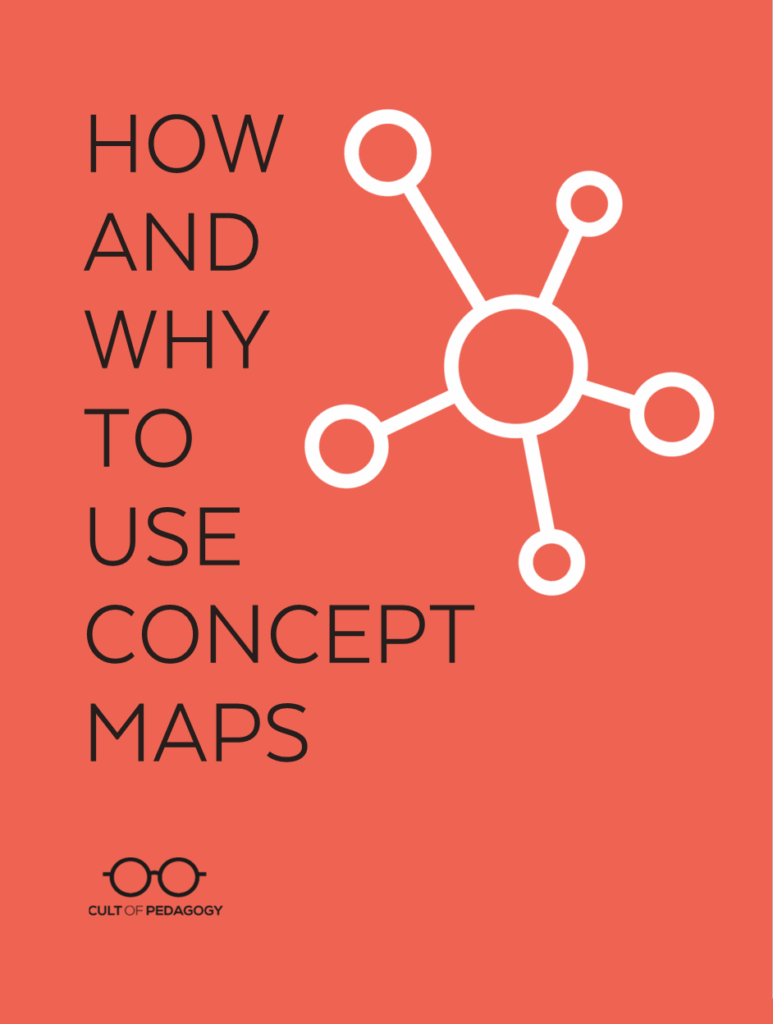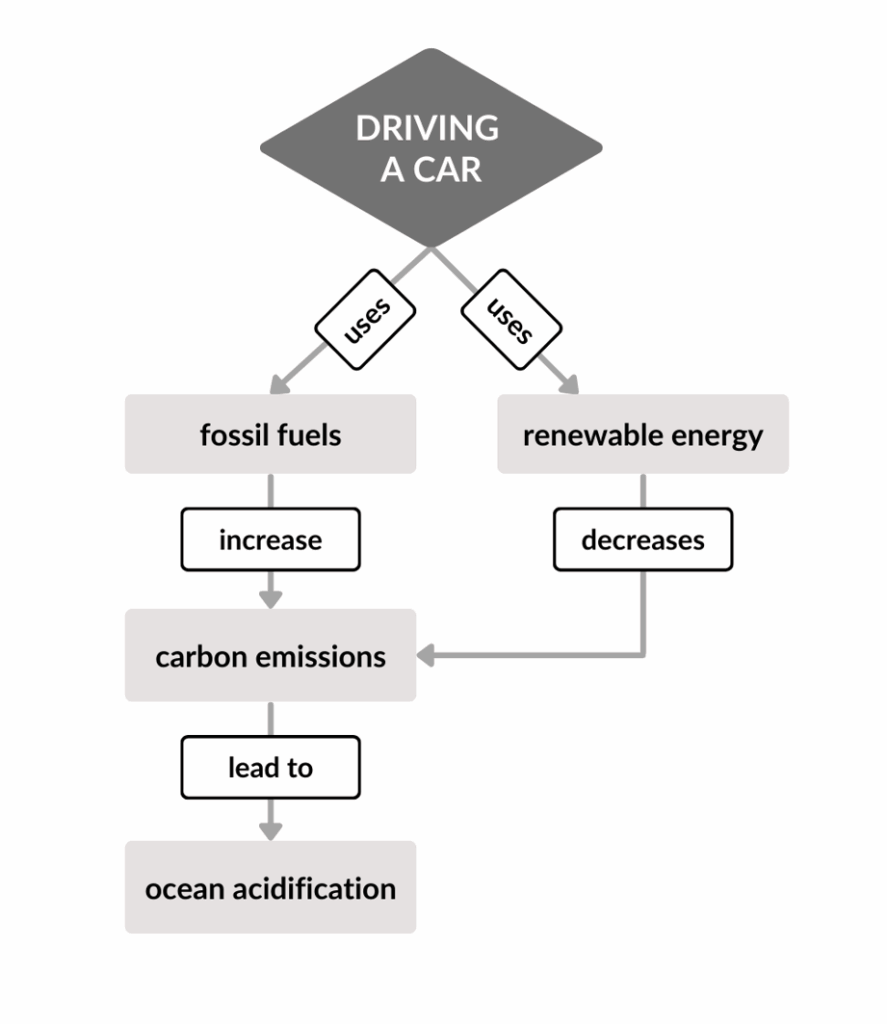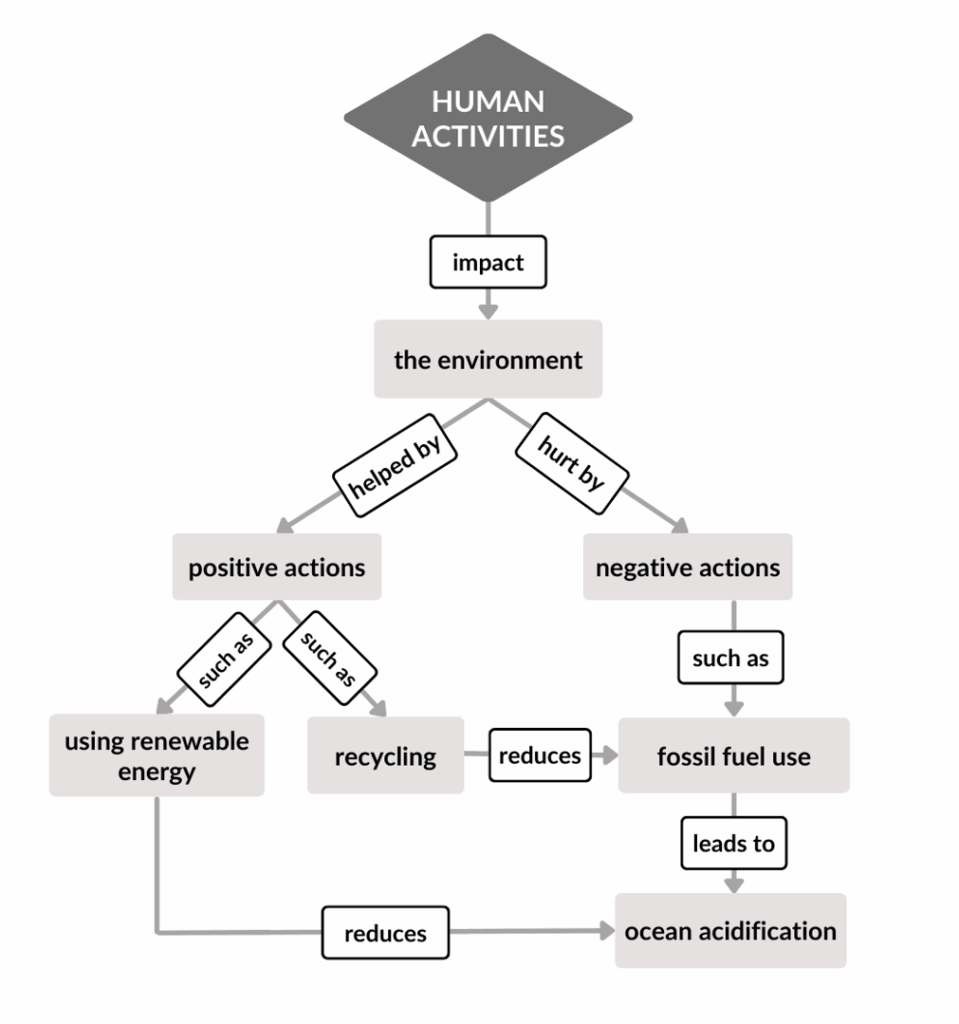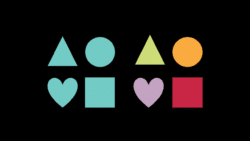
Listen to the interview with Dr. Kripa Sundar and Dr. Pooja Agarwal (transcript):
Sponsored by Listenwise and Solution Tree
This page contains Bookshop.org links. When you make a purchase through these links, Cult of Pedagogy gets a small percentage of the sale at no extra cost to you. What’s the difference between Amazon and Bookshop.org?
Representing ideas visually is something many humans do by instinct; when we go to explain something to someone else, it’s not uncommon for us to grab something to write with and say, “Here, let me show you.”
Sometimes the concept itself is already visual — like a diagram of a simple machine or a rough plan for a garden. Other times, we can use visuals to represent ideas, like a flow chart that illustrates how a process works. One of the ways we can do this is with concept maps.
A concept map is a graphic organizer or visual representation of knowledge. You may have heard other terms used to describe these, like mind maps or spider maps, but they all operate in basically the same way: Key concepts are put into nodes, which look like boxes or bubbles with words inside them, and they are linked together with lines or arrows to show their relationship.
Concept maps are simple, they don’t require any complicated technology, and they can be created pretty quickly. Despite their lack of bells and whistles, they can be incredibly powerful tools for learning, especially if you know some principles about how to use them well.
Someone who knows a lot about those principles is Dr. Kripa Sundar, a cognitive scientist who specializes in research on concept mapping, among other things. She’s one of the contributors to the book, Smart Teaching Stronger Learning: Practical Tips from 10 Cognitive Scientists. The book’s editor, Dr. Pooja Agarwal, invited 10 cognitive scientists to share their own actionable, evidence-based classroom practices. Earlier this year, two of these authors shared some excellent retrieval practice strategies.


On the podcast this week, we visit another chapter all about concept mapping: Dr. Sundar explains why concept maps are such powerful learning tools, then shares a handful of specific practices that will help you make the best use of them. You can listen to the full episode above, read the transcript here, or get a quick summary below.
Why Concept Maps Are Effective Learning Tools
Dr. Sundar can’t say enough about how great concept maps are for learning. “It’s such a packed strategy,” she says. In an article for AFT, she points out that multiple meta-analyses support the effectiveness of concept maps, many of them suggesting that they have a bigger impact on learning than lectures, discussions, or text summaries.
So why are they so effective? In the book (p. 60), Dr. Sundar explains that concept maps engage all three parts of the memory formation model:
- When learners describe the relationships between concepts using linking words, they practice elaboration, which improves encoding.
- Organizing concepts in a structure that reflects a learner’s mental schema supports their storage of key concepts.
- When a learner generates concepts and nodes, they engage in the process of retrieval practice.
Best Practices for Using Concept Maps
Be Clear About Your Motivation
“As with all instructional strategies,” Sundar explains, “the first question is why? Why are you choosing a concept map for what you’re trying to do? Concept maps can be done as a group activity, as a whole class activity, as an individual activity, for learning/notetaking, or for actual assessment.” Figuring this out, she says, is a good place to start.
Have a Guiding Question
Narrowing your focus to a specific question will help you limit the number of concepts you include in your map, making it much less overwhelming.
In the book, Sundar gives two examples of how a guiding question can change the way a concept map develops. In both of these examples, the map is showing us something about causes of ocean acidification. The first guiding question is “What is the relationship between driving a car and ocean acidification?” Here’s a map that for that question:

A different question, “What is the relationship between human activities and ocean acidification?” would result in a much more complex map:

Use Linking Words
You’ll notice in the above two examples that the nodes in each map are not connected just by lines; the lines have directional arrows and they are labeled with linking words that describe how the concepts are connected.
While adding these linking words requires a lot more work, Sundar says it makes a huge difference in making the map a more robust learning tool. “It is a pain in the beep,” she says. “But that’s when you really push your learning harder.”
Ways to Use Concept Maps in the Classroom
Expert Maps
Created by the teacher, these maps give learners a visual representation of key concepts and relationships in a unit of study. Students can use these as a reference tool throughout the unit.
Sundar says these expert maps allow students to see the big picture of a body of information right from the beginning, “a wonderful way to show people, look, over the next 16 weeks, we’re going to talk about all of these things. It’s going to feel random at points, but here’s how they all connect.”
When using expert maps, Sundar cautions teachers to not overwhelm students with too much information at once. “There’s something called concept map shock,” she says. “Sometimes when we present all of these concepts together up front, people are like, Holy cow, I’m out.”
To prevent this from happening, you can show the overall structure of the expert map with only the bigger concepts included, then reveal some of the smaller details later as the unit progresses. “You don’t necessarily have to show them everything right away,” Sundar explains.
Note-Taking
Rather than writing lengthy notes on a topic, students can use concept maps, which are not only more efficient, but represent relationships more clearly.
“Sometimes when we write, we just go on and on,” Sundar says. Using a concept map allows us to capture more information in just a few words and diagrams. “Coming up with a visual representation for it kind of jumps over a lot of the need for lengthy explanations and paragraphs.”
One simple approach she recommends is to keep a list of key terms, either on the wall or in student notebooks, and have students occasionally work from that list to build a map that shows how those concepts relate to one another.
Formative Assessment
Having students complete concept maps is an excellent way to measure how well they understand the content. One effective way to do this is to present students with a partially completed concept map and ask them to finish it.
Learn More
- Visit retrievalpractice.org/smartteaching for free downloads, including the book introduction and a list of tips from each chapter
- Subscribe to Dr. Agarwal’s newsletter at retrievalpractice.org for upcoming webinars and new resources.
- Follow Dr. Agarwal at @RetrieveLearn on social media and Dr. Kripa Sundar on LinkedIn.
Join our mailing list and get weekly tips, tools, and inspiration that will make your teaching more effective and fun. You’ll get access to our members-only library of free downloads, including 20 Ways to Cut Your Grading Time in Half, the e-booklet that has helped thousands of teachers save time on grading. Over 50,000 teachers have already joined—come on in.






In my experience teaching high school chemistry at a Title I school, many of my students encounter concept maps for the very first time in my classroom. While they are very useful, teaching students how to use them effectively takes modeling and a good deal of practice.
Once I figured out what worked best for my students, I wrote a blog post sharing the strategies I use to teach them how to build concept maps. I thought it might be helpful to teachers who are looking to implement concept maps in their classrooms:
https://scientistsinthemaking.com/concept-maps-a-tool-for-strengthening-background-knowledge-and-boosting-comprehension/.
Thank you for sharing this, Marcie!